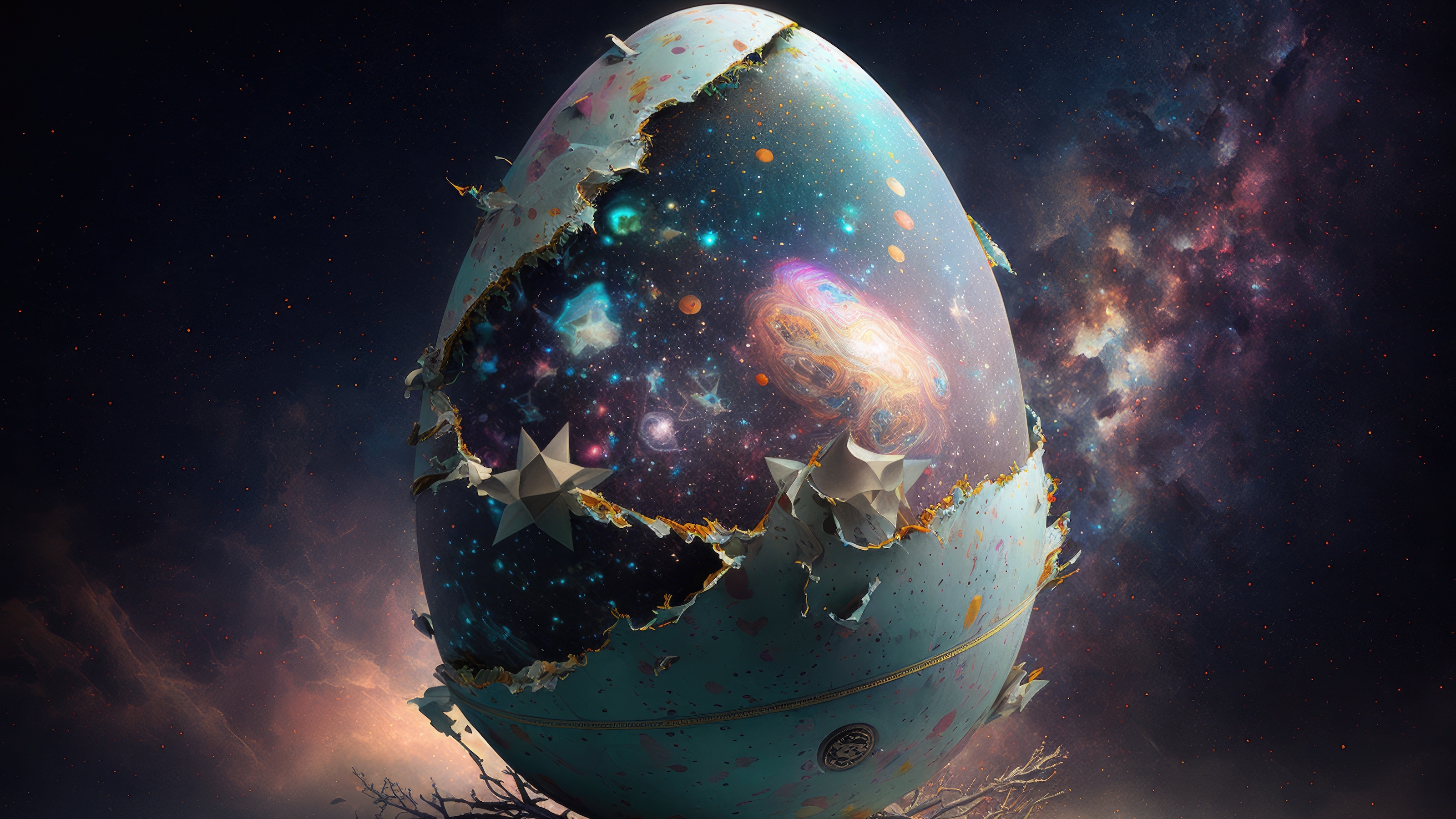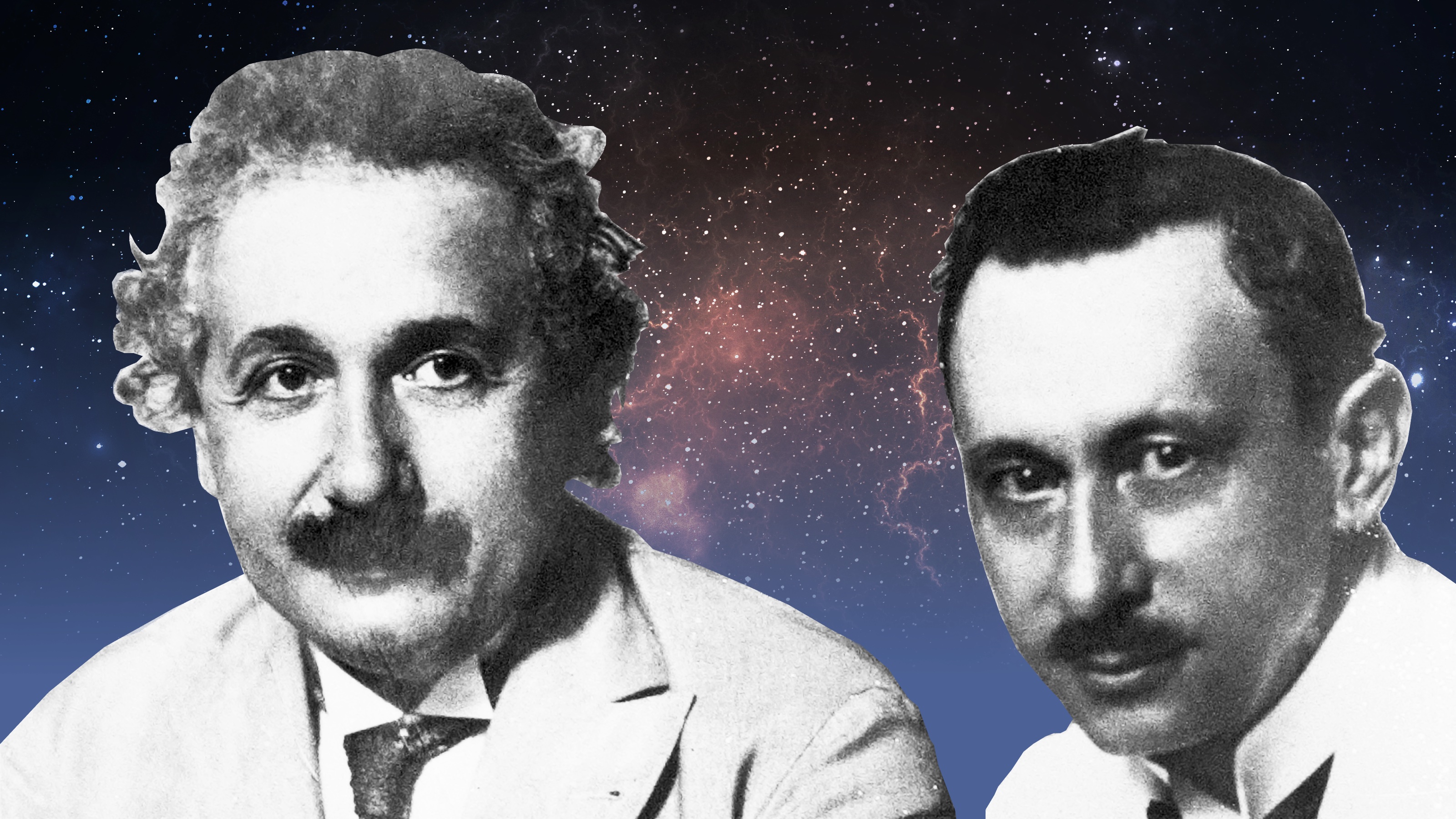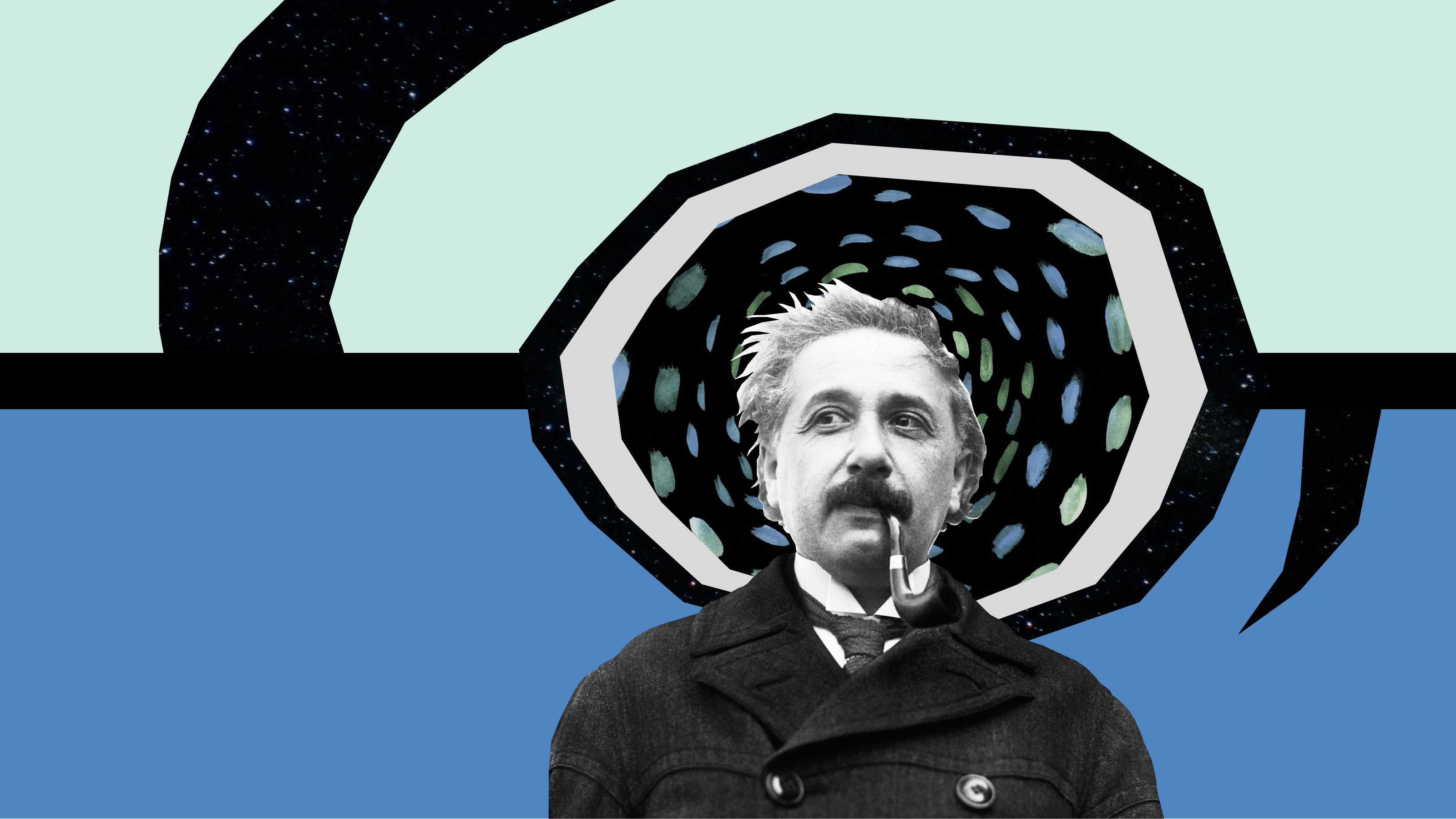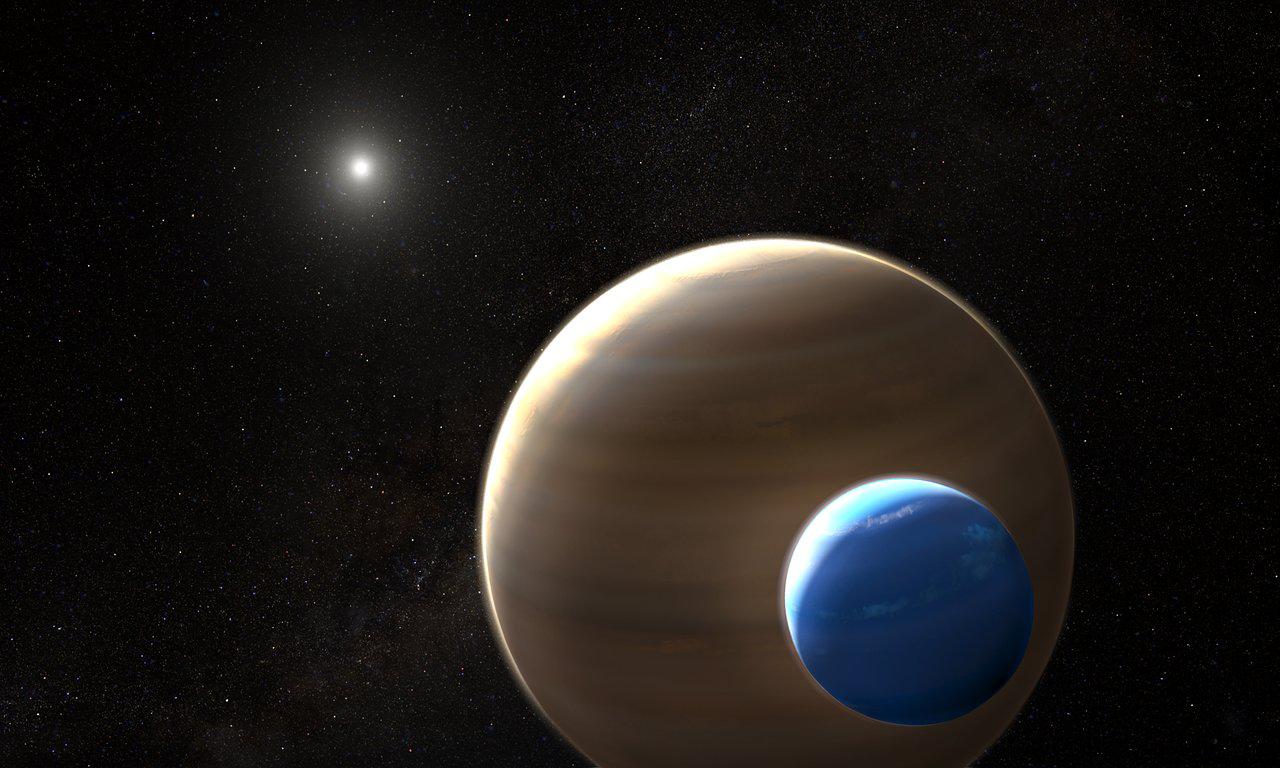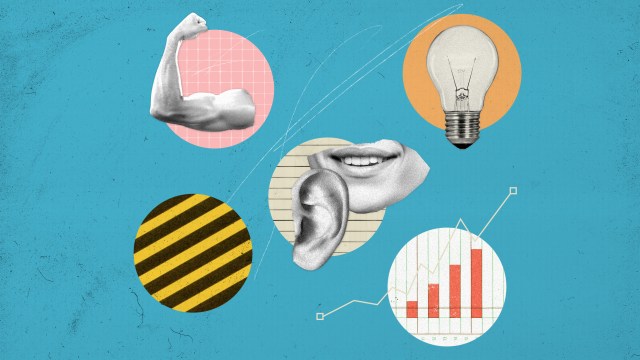How the Big Bang model was born

- The Big Bang model of cosmology was inspired by a wild idea: that the Universe emerged from the decay of a quantum egg.
- From this state, primeval matter organized into more complex structures, from atomic nuclei to atoms.
- The model is a triumph of intellectual courage and creativity. Its confirmation in 1965 changed our understanding of the Universe forever.
The Big Bang model of cosmology says the Universe emerged from a single event in the far past. The model was inspired by the adventurous cosmic quantum egg idea, which suggested that in the beginning, all that exists was compressed into an unstable quantum state. When this single entity burst and decayed into fragments, it created space and time.
To take this imaginative notion and craft a theory of the Universe was quite a feat of creativity. To understand the cosmic infancy, it turns out, we need to invoke quantum physics, the physics of the very small.
The energy that binds
It all started in the mid-1940s with the Russian-American physicist George Gamow. He knew that protons and neutrons are held together in the atomic nucleus by the strong nuclear force, and that electrons are held in orbit around the nucleus by electrical attraction. The fact that the strong force does not care about electric charge adds an interesting twist to nuclear physics. Since neutrons are electrically neutral, it is possible for a given element to have different numbers of neutrons in its nucleus. For example, a hydrogen atom is made of a proton and an electron. But it is possible to add one or two neutrons to its nucleus.
These heavier hydrogen cousins are called isotopes. Deuterium has a proton and a neutron, while tritium has a proton and two neutrons. Every element has several isotopes, each built by adding or extracting neutrons in the nucleus. Gamow’s idea was that matter would build from the primeval stuff that filled space near the beginning. This happened progressively, building from the smallest objects to larger ones. Protons and neutrons joined to form nuclei, then binding electrons to form complete atoms.
How do we synthesize deuterium? By fusing a proton and a neutron. What about tritium? By fusing an extra neutron to deuterium. And helium? By fusing two protons and two neutrons, which can be done in a variety of ways. The build-up continues as heavier and heavier elements are synthesized inside of stars.
A fusion process releases energy, at least up to the formation of the element iron. This is called the binding energy, and it equals the energy we must provide to a system of bound particles to break a bond. Any system of particles bound by some force has an associated binding energy. A hydrogen atom is made of a bound proton and an electron, and it has a specific binding energy. If I disturb the atom with an energy that exceeds its binding energy, I will break the bond between the proton and the electron, which will then move freely away from each other. This buildup of heavier nuclei from smaller ones is called nucleosynthesis.
Universal cooking lessons
In 1947, Gamow enlisted the help of two collaborators. Ralph Alpher was a graduate student at George Washington University, while Robert Herman worked at the Johns Hopkins Applied Physics Laboratory. Over the following six years, the three researchers would develop the physics of the Big Bang model pretty much as we know it today.
Gamow’s picture starts with a Universe filled with protons, neutrons, and electrons. This is the matter component of the early Universe, which Alpher called ylem. Added to the mix were very energetic photons, the early Universe’s heat component. The Universe was so hot at this early time that no binding was possible. Every time a proton tried to bind with a neutron to make a deuterium nucleus, a photon would come racing to hit the two away from each other. Electrons, which are bound to protons by the much weaker electromagnetic force, didn’t have a chance. There can be no binding when it is too hot. And we are talking about some seriously hot temperatures here, around 1 trillion degrees Fahrenheit.
The image of a cosmic soup tends to emerge quite naturally when we describe these very early stages in the history of the Universe. The building blocks of matter roamed freely, colliding with each other and with photons but never binding to form nuclei or atoms. They acted somewhat like floating vegetables in a hot minestrone soup. As the Big Bang model evolved to its accepted form, the basic ingredients of this cosmic soup changed somewhat, but the fundamental recipe did not.
Structure started to emerge. The hierarchical clustering of matter progressed steadily as the Universe expanded and cooled. As the temperature lowered and photons became less energetic, nuclear bonds between protons and neutrons became possible. An era known as primordial nucleosynthesis started. This time saw the formation of deuterium and tritium; helium and its isotope helium-3; and an isotope of lithium, lithium-7. The lightest nuclei were cooked in the Universe’s earliest moments of existence.
Photonic relationships
According to Gamow and collaborators, this all took about 45 minutes. Accounting for more modern values given to the various nuclear reaction rates, it only took about three minutes. The remarkable feat of Gamow, Alpher, and Herman’s theory was that they could predict the abundance of these light nuclei. Using relativistic cosmology and nuclear physics, they could tell us how much helium should have been synthesized in the early Universe — it turns out that about 24 percent of the Universe is made of helium. Their predictions could then be checked against what was produced in stars and compared to observations.
Gamow then made a much more dramatic prediction. After the era of nucleosynthesis, the ingredients of the cosmic soup were mostly the light nuclei in addition to electrons, photons, and neutrinos — particles that are very important in radioactive decay. The next step in the hierarchical clustering of matter is to make atoms. As the Universe expanded it cooled, and photons became progressively less energetic. At some point, when the Universe was about 400,000 years of age, the conditions were ripe for electrons to bind with protons and create hydrogen atoms.
Before this time, whenever a proton and an electron tried to bind, a photon would kick them apart, in a sort of unhappy love triangle with no resolution. As the photons cooled down to about 6,000 degrees Fahrenheit, the attraction between protons and electrons overcame the photons’ interference, and binding finally occurred. Photons were suddenly free to move around, chasing their dance across the Universe. They were not to interfere with atoms anymore, but to exist on their own, impervious to all this binding that seems to be so important for matter.
Gamow realized these photons would have a special distribution of frequencies known as a blackbody spectrum. The temperature was high at the time of decoupling — that is, in the epoch when atoms formed and photons were free to roam across the Universe. But since the Universe has been expanding and cooling for about 14 billion years, the present temperature of the photons would be very low.
Earlier predictions were not very accurate, as this temperature is sensitive to aspects of nuclear reactions that were not accurately understood in the late 1940s. Nevertheless, in 1948 Alpher and Herman predicted this cosmic bath of photons would have a temperature of 5 degrees above absolute zero, or about -451 degrees Fahrenheit. The current given value is 2.73 Kelvin. Thus, according to the Big Bang model, the Universe is a giant blackbody, immersed in a bath of very cold photons peaked at microwave wavelengths — the so-called fossil rays — from its hot early infancy. In 1965, this radiation was accidentally discovered, and cosmology would never be the same. But that story deserves its own essay.
